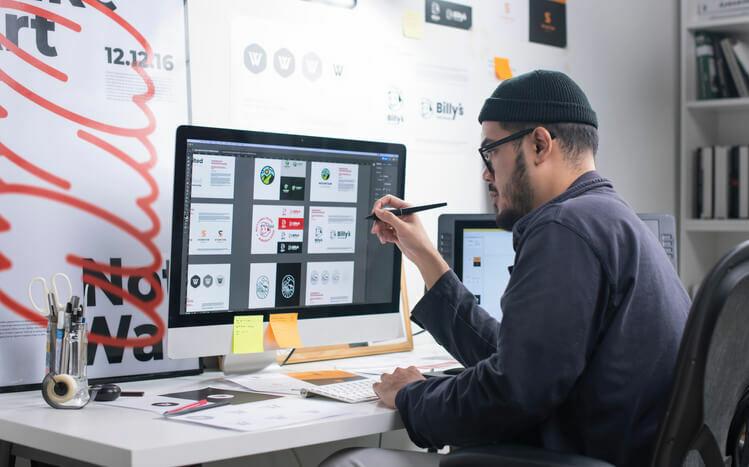
Graphic design is an expansive field that touches every corner of our visual world. From the websites we browse to the packaging of our favorite products, the influence of good design is omnipresent. Robust brand identity design is crucial to the success of every business organization. It influences every facet of a company’s marketing approach and bolsters organizational objectives and customer interactions.
If you’re interested in forging a career in graphic design, understanding the intricacies of brand identity is vital. It’s about creating beautiful images and weaving a compelling narrative that resonates with its audience. This blog post provides an in-depth exploration of brand identity and why it is crucial to the success of any branded graphic design project.
What Is Brand Identity?
Brand identity is the visual representation of a company’s values, goals, and personality. It encapsulates everything from color schemes and typography to logo designs and imagery. This visual identity plays an enormous role in determining how a brand is perceived by its audience and how well its messages resonate.

As you’ll discover in graphic design training, graphic design plays a crucial role in brand identity.
Think about some of the world’s most iconic brands, like Apple, Coca-Cola, or Nike. Most people can instantly visualize their logos, recall their signature colors, and remember their taglines without mentioning their names. This instant recognition and the associated feelings aren’t mere coincidences; they result from meticulously crafted brand identities.
The Role of Graphic Designer in Shaping Brand Identity
For graphic designers, understanding and harnessing the power of brand identity is crucial. After your graphic design training, a career in this domain isn’t just about artistic capabilities; it’s about strategic vision and storytelling. In today’s digital age, consumers are overwhelmed with choices. A strong brand identity stands out, and fosters trust. When designed with care, consistency, and clarity, it sends a message that the brand is reliable and professional. For designers, this means diving deep into understanding the company’s ethos and crafting visual elements that mirror those values.

As graphic design training emphasizes, brand identity should evoke emotions.
A powerful brand identity can evoke feelings and emotions. Think about the warmth you feel seeing the rustic logo of a local bakery or the excitement from the vibrant colors of a tech startup. As a designer, you must tap into these emotions and reflect them through visuals. Beyond this, a strong brand identity can significantly influence purchasing decisions. A
well-designed product package or an engaging ad campaign can be the difference between a consumer choosing your brand over another.
Navigating Brand Identity in Your Graphic Design Career
If you’re setting foot in the graphic design world, keeping these guidelines in mind can significantly improve the quality of your output. Before starting any design project, invest time in understanding the brand’s history, values, target audience, and market positioning. This research will serve as a foundation for your designs.
Also, remember that maintaining consistency is essential whether you’re redesigning a logo or creating marketing materials. It reinforces brand recognition and builds trust among consumers.
Brand identity isn’t static. It evolves with time, societal changes, and market dynamics. Throughout your graphic design career, ensure that you stay updated with the latest design trends, consumer behavior, and technological advancements. Design, at times, can be subjective. Regularly seek feedback from peers, mentors, and the client. Iterative feedback helps refine the design and ensures it aligns with the brand’s goals.
Are you interested in earning our graphic design diploma?
Contact AOLCC for more information.


